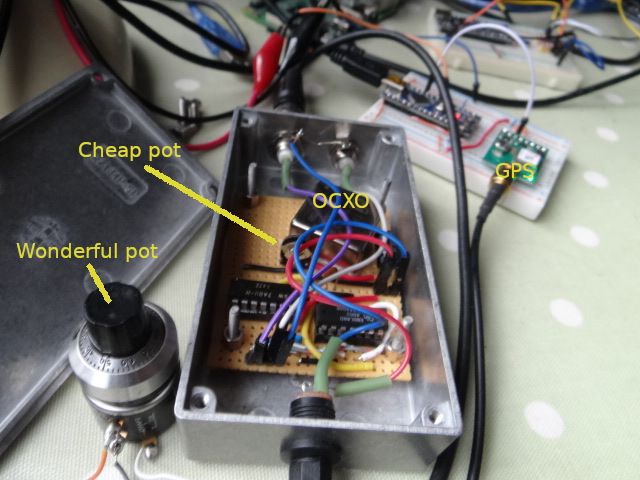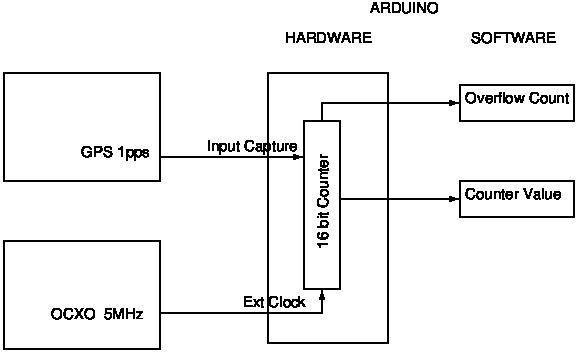mm, trying hard not to get drawn too deep down this tunnel..I suffered it during my two GPSDO's development…
However..Any time to digital convertor – picpet, etc, must be fed with a ref frequency superior in accuracy/stability to the measurand – Michael said it – what is the reference you are using? Is it the GPS? If so , what frequency have you set its pps clock to? Not 10MHz I hope…
Michael also mentioned :
Meanwhile, it seems to me that the most accurate thing you have available is the GPS … and the ability to divide its output by integer values.
The divide by integer is not quite correct – to be clear, the only low jitter values the GPS 1PPS output can be programmed to are 1,2,4,8,16 and 24MHZ – ie, divide by 2's. 8 is an integer, and div by 8 gives 6MHz with bad jitter…etc.
HOWEVER, Bbe careful of the Monkey here…you can spend most of your spare time chasing a stable and accurate ref clock…while the stability and accuracy of you desktop pendulum is orders poorer than even a basic 1PPM TCXO.
Before said TCXO's characteristics are challenged and begin to contaminate the pendulum performance, you may find a year or more of pendulum development in the way…
A 1PPM 10MHz osc is quite adequate for substantial stability and frequency accuracy measurements. Use a 1ppm or 0.5ppm TCXO ( 10USD) , pack it in a styrofoam brick, stabilised PSU, settle for two or three days and you will be hard pressed to do better , and will not need to, till your pendulum is REALLY good…This will manifest in ADEV where the pendulum rivals the refclock, ie when ADEV gets down to around 10 minus 6 or so…
Using 1sec ref clocks from internet time servers, via the Pi, etc, timestamped and shuttled around – You have to be very good at it to not add subtle shifts and jitter to the result, which you will believe is good and will lead you astray. You have little means of verifying the quality of result.
Re the Freq of your OCXO Dave – I suggest it most unlikely that the 10Hz error is correct. An OCXO with 2Hz adjustment (0.2ppm) is generally reserved for fairly decent OCXO's – of which the frequency accuracy will generally be within the adjustment range after a specified aging life time, generally specced at 5 years, some even 10 years. Banging the OCXO will mess it up a bit, but it takes quite a bang, some 10's of G's..
It is all too easy to blame the indeterminable when the test setup is not quantified, qualified, and well understood.
Edited By Joseph Noci 1 on 24/02/2023 20:01:48
John Haine.







